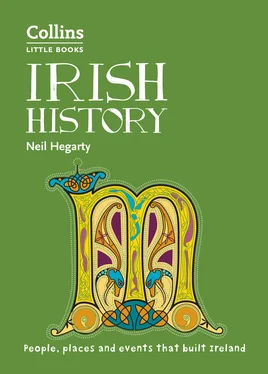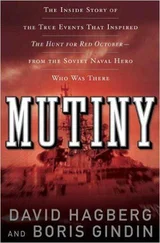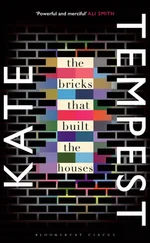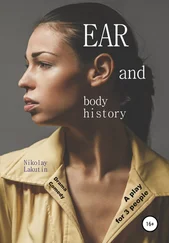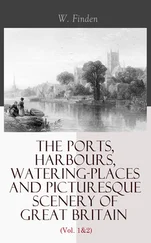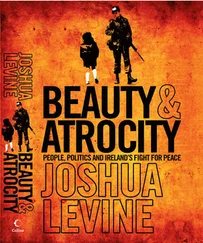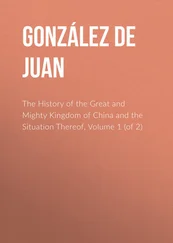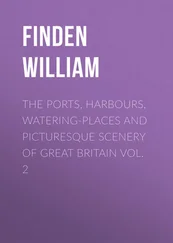HarperCollins Publishers
Westerhill Road
Bishopbriggs
Glasgow
G64 2QT
First Edition 2020
© HarperCollins Publishers 2020
Collins® is a registered trademark of HarperCollins Publishers Limited
www.collins.co.uk
A catalogue record for this book is available from the British Library
Author: Neil Hegarty
All rights reserved under International and Pan-American Copyright Conventions. By payment of the required fees, you have been granted the non-exclusive, non-transferable right to access and read the text of this e-book on screen. No part of this text may be reproduced, transmitted, downloaded, decompiled, reverse engineered, or stored in or introduced into any information storage and retrieval system, in any form or by any means, whether electronic or mechanical, now known or hereafter invented, without the express written permission of HarperCollins.
HarperCollins does not warrant that www.collins.co.ukor any other website mentioned in this title will be provided uninterrupted, that any website will be error free, that defects will be corrected, or that the website or the server that makes it available are free of viruses or bugs. For full terms and conditions please refer to the site terms provided on the website.
Print Edition ISBN 978-0-00-834013-1
eBook Edition © October 2019 ISBN 978-0-00-837919-3
Version: 2019-11-08
Cover
Title Page
Copyright
Introduction
Irish History
Mesolithic Ireland
The Céide Fields
Newgrange
History and Myth: Cúchulainn
The Celts
Dún Aonghasa
The Broighter Hoard
Hibernia and Rome
Before Christianity
Palladius: the ‘first Patrick’
Patrick: myth and reality
Pilgrimage
‘Saints and Scholars’
Glendalough
Dál Riata
Colm Cille
Columbanus in Europe
The Irish language
Skellig Michael
Illumination
‘Heathen men’
The Viking presence
Dublin
Brian Boru
Laudabiliter
Invasion
Giraldus Cambrensis
A royal visit
Dublin Castle
The Lordship of Ireland
The ‘Remonstrance of the Princes’
The Bruce Invasion
The Statutes of Kilkenny
Reconquest
Surrender and Regrant
‘Great Terror’
Granuaile
Trinity College Dublin
Kinsale
The Flight of the Earls
The Wild Geese
The Plantation of Ulster
The Walls of Derry
1641
Cromwell
A ‘deluded and seduced people’
The Act of Settlement
The Big House
The Siege of Derry
The Battle of the Boyne
The Penal Laws
Marsh’s Library
The Royal Hospital
Georgian Dublin
Swift
The Irish Parliament
Irish Presbyterianism in America
The United Irishmen
1798
The Act of Union
Maria Edgeworth
Wellington
Moore’s Melodies
Irish Lights
Emancipation
O’Connell and Repeal
The Great Hunger
The Famine and the Future
The Irish Diaspora
The Fenians
The Church Ascendant
The ‘Irish Question’
The Revival
The Gaelic Athletic Association
The Abbey Theatre
Yeats and Joyce
Industrial Ulster
Titanic
The Ulster Covenant
A World at War
The Easter Rising
Collins and de Valera
The War of Independence
The first ‘Bloody Sunday’
The Treaty
Constance Markievicz
Civil War
The Irish Border
In Northern Ireland
In the Free State
De Valera’s Ireland
The Jews of Ireland
The Treaty Ports
The ‘Emergency’
Northern Ireland at War
Elizabeth Bowen
The ‘Mother and Child’ Scheme
The Islands of Ireland
Edna O’Brien
The Road to the Troubles
The Troubles
The Second ‘Bloody Sunday’
In Europe
The Presidents of Ireland
Corncrake
Catholicism and Ireland
The ‘X Case’
Church scandals
Incarceration
The Good Friday Agreement
Imperfect peace
Two Nobels
A Tiger and a Bail-Out
Two Referendums
Brexit and the future
Index
Photo credits
About the author
About the Publisher
From the very beginnings of its history, the island of Ireland has been open to the influence of the surrounding world. The seas that separate Ireland from its European neighbours might seem, on the face of it, to act as barriers, dividing the inhabitants of Ireland from international affairs. In fact, the opposite has always been the case, for the seas have acted as highways, bringing foreign influences, goods and traffic, travellers, wanderers, and invaders to Irish shores.
This, then, is an island with a history woven into a much larger tapestry – and the pages of this book demonstrate this international dimension in Irish history time and again. The first inhabitants of Ireland arrived from abroad, as the ice sheets retreated and the seas rose, and they have continued to arrive from overseas. The work of acculturation – of newcomers putting down roots in a new land, trading, farming, connecting in human, cultural, social, and economic ways – can be seen consistently at play, and this process complicates the narratives of invasion and conquest that form such dominant themes in Irish history.
Of course, armed invasions have indeed recurred throughout Irish history and they were ferocious in nature. In their wake came death, starvation, and dispossession, with the poor, the old, women, and children bearing the brunt of the violence, and no history worth the name can sidestep such brutal facts. This book traces the nature and character of such episodes, some of which are better known than others. The incursion of Scottish armies into Ireland brought ruin to the land, but this fourteenth-century episode is less well remembered than the Cromwellian invasion of the seventeenth century, which devastated Irish society, causing the deaths of hundreds of thousands of Irish men, women, and children. The figure of Oliver Cromwell himself is remembered in England as a proto-democrat, but in Ireland his name is associated with gruesome violence and genocide. Such episodes are worth dwelling on, for they remind us that if a history is to be truly meaningful, it must illuminate the experience of the defeated, as well as that of the victor.
Stubborn political dogma and wilful blindness have also played malignant roles in the story of Ireland, and this is nowhere better exemplified than in the events of the Great Famine of the nineteenth century. This is Ireland’s defining social, economic, emotional, and demographic fracture. It offers a dreadful reminder that violence and trauma in history take many forms, and leave a mark upon society for generations to come.
This book attends to the complexity of Ireland past and present: to its writers and its architecture, its landscape and natural world, its religions, artefacts, and sports, and to the imprint and lasting influence of the ancient Irish language. It traces the stories of its politics and its divisions. One such division – the political border that runs through the island today – has seldom been out of the headlines in recent years. The violence it has engendered and the political tensions that surround it are examined too in all their fraught complexity, together with the facts surrounding the creation of two Irish states in the modern era, and the trajectories of their society and politics. The nature of the peace process in Northern Ireland, the progressive politics that have emerged in a Republic of Ireland that was once a bastion of Catholicism in Europe: these issues and more are explored – all with an eye on a future that, in an age of Brexit, is remarkably, startlingly plastic.
Читать дальше
